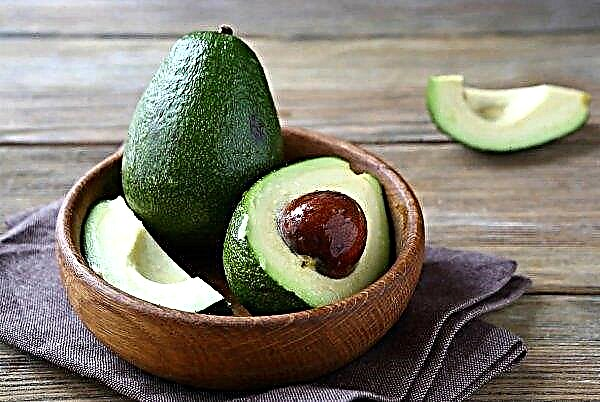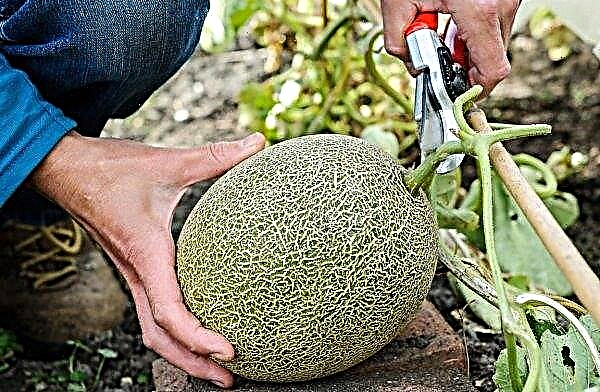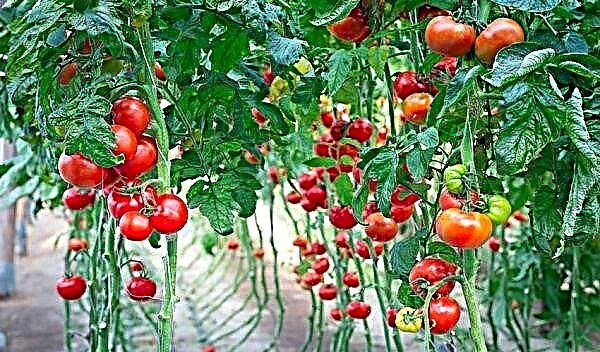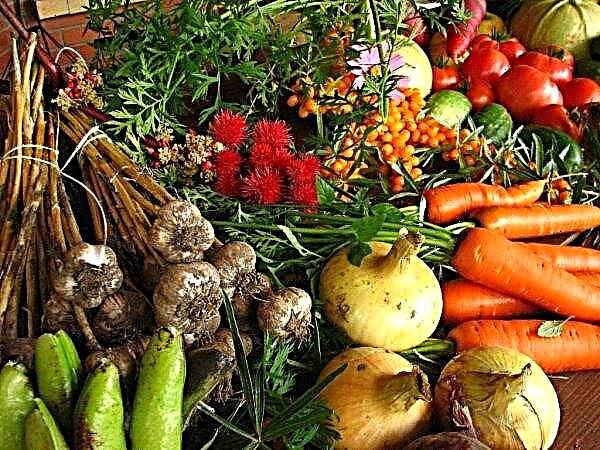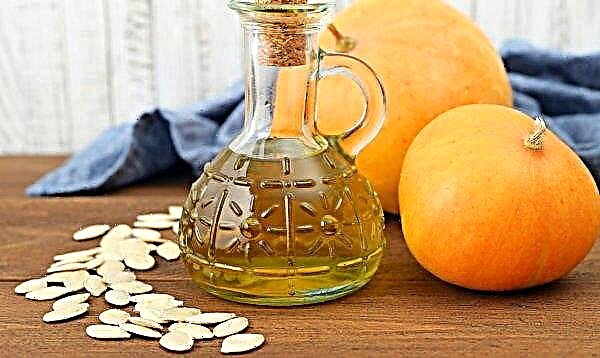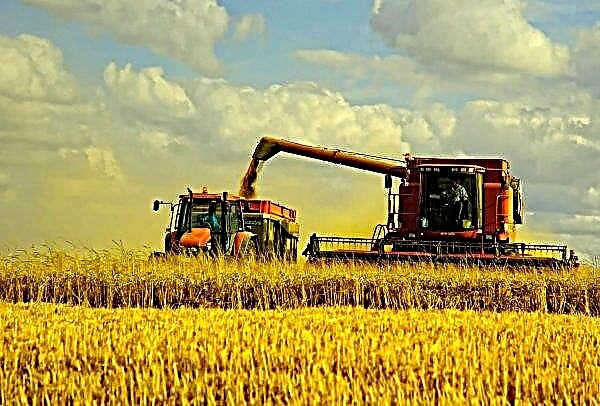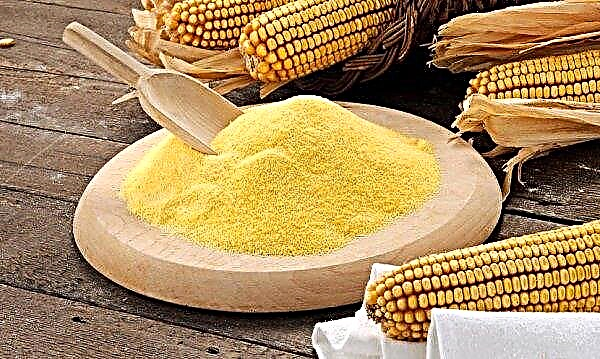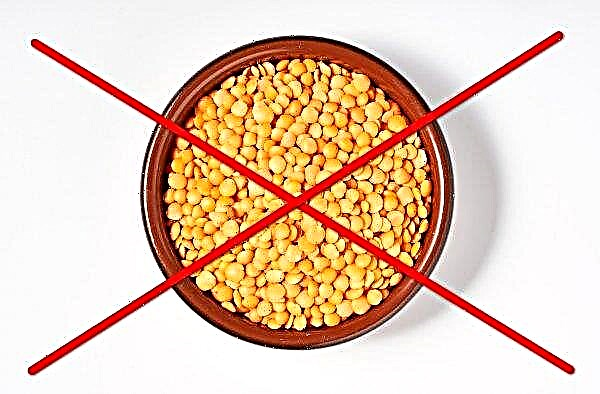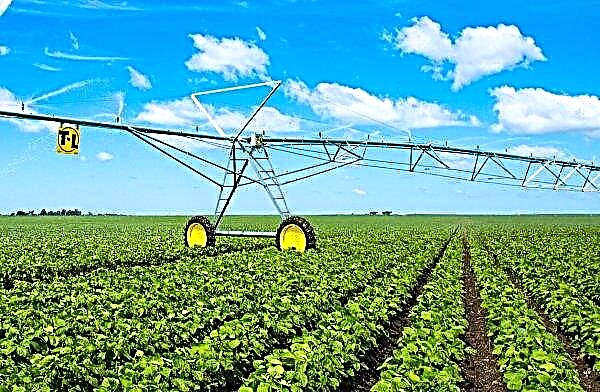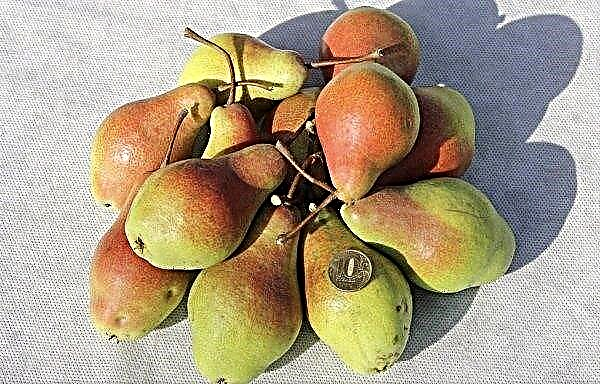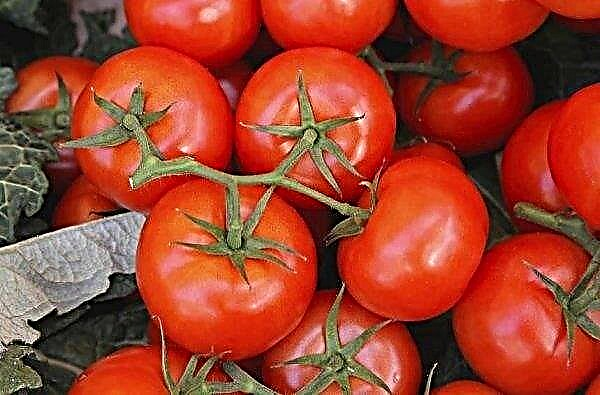Fertilizing the soil on which the crop grows, you saturate the plant roots with nutrients for better growth and fruiting. For top dressing to be effective, you need to choose the right fertilizer and follow the recommendations for their application. The article will discuss the technology of fertilizing tomatoes growing in greenhouse conditions.
Why is fertilizing needed for greenhouse tomatoes?
Tomatoes growing in a greenhouse do not receive the ultraviolet light they need to grow. Air movement is limited, which can cause illness. In greenhouse conditions it is more difficult to observe crop rotation. Growing from year to year in one place, tomatoes quickly deplete the soil. In order for a plant to grow, develop and give a good harvest, it needs not only watering, comfortable temperature and humidity, but also regular fertilizing.
Did you know? Tomatoes were brought to Russia from Europe in 1780 by the ambassador of Catherine II. At court, they reacted to him like this: "EThese fruits are wonderful and with the wrong taste!» The agronomist A. Bolotov spoke in defense of the vegetable, convincing people that the fruit can be eaten, and that it is easy to get used to the unusual taste and smell.
Types of fertilizers
Top dressing is divided into two groups: organic and inorganic (or mineral).
Mineral
Among inorganic substances containing the necessary micro and macro elements, the following are popular:
- Phosphoric (phosphates, superphosphates). Their main component is phosphorus, which is necessary for the growth of the bush and the formation of fruits. Superphosphates also contain phosphates of iron, aluminum, silicon dioxide, fluorine compounds.
- Potash (monophosphate and potassium chloride). In addition to potassium, they may contain chlorine, magnesium, calcium, nitrogen.
- Nitrogen. They are divided into ammonia, nitrate, ammonia-nitrate, amide. Their main element is nitrogen. Additional - sodium, calcium, chlorine.

Tomatoes can be fed not only with individual groups of mineral fertilizers, but also complex:
- Diammaphoska (26% phosphorus and potassium, 10% nitrogen);
- Ammophos (50% phosphorus, 10% nitrogen, no chlorine);
- "Nitroammofoska" (nitrogen, phosphorus, potassium 16% each).
Did you know? Tomato fruits contain thiamine (vitamin anti-stress), which in the body turns into serotonin («hormone of happiness») Therefore, tomatoes can normalize the human nervous system. More thiamine is found in pink varieties.
Organic
They contain essential nutrients for the plant in the form of organic compounds. Therefore, they gently affect the soil and culture, because of which they are preferred by gardeners.
Popular organic fertilizers include:
- Litter of sheep and cattle. Contains water, organic matter, nitrogen, phosphorus, potassium and calcium. It is a universal fertilizer. It has the property of heating the soil, protecting the plant from frost.
- Chicken droppings. The composition is similar to livestock manure, but fewer substances.
- Peat. Most of it consists of water and only 10–20% falls on plant residues and their decay products. The main quality is the ability to regulate humidity.
Important! The alternation of organic and mineral top dressing, as well as root and extra root is more effective.
The use of folk remedies
Organic substances are used to prepare folk remedies, therefore their effect on the plant is gentle.
These include:
- iodine (helps to accelerate the ripening of fruits and prevent the occurrence of late blight) - 4 drops per 10 liters of water;
- ash (used in the form of an aqueous solution - 1 tbsp. per 10 l);
- yeast (rich in nitrogen, phosphorus, iron, potassium, calcium, copper, zinc) - 100 g per 10 l of water;
- nettle (a source of nitrogen, potassium, iron) - water tinctures are prepared from it.

Feeding Times
In spring, the soil is fertilized with rotted manure before planting seedlings. In the summer, top dressing is carried out in July, before the ovary begins to form. Organic substances (manure and litter) are also used. Between these dressings should be another two or three. In July, fertilizers are applied at intervals of 8-10 days in order to accelerate the ripening of the crop. Autumn mineralization of the soil is carried out at the time of its preparation for winter.
Feeding Technology
Tomatoes absorb nutrients through the roots and foliage. Therefore, top dressing is divided into root and extra root.
Foliar
A kind of "ambulance" for the plant. It is used if the tomato needs to be quickly saturated with nutrients, since they are absorbed faster from the greens than through the root. The quick reaction of the plant to foliar fertilizer is noticeable on tall varieties.
It is carried out as follows:
- Evaluate the appearance of the plant or consider the period of its growing season, in accordance with this, select the substance.
- Prepare the mixture and pour into a convenient spray bottle.
- Choose a cool cloudy day and spray. It is advisable to perform it in the morning.
- Irrigate the bush carefully so that the nutrient mixture falls on each leaf.

Root
In this way, basic fertilizers are applied. It is performed three to four times during the growing season.
- Assess the condition of the bush (growing season).
- Prepare the necessary fertilizer and fill it with a convenient container.
- Perform the procedure in the early morning on a cloudy day.
- Water the tomatoes only under the root, the solution should not fall on the foliage.
Features of the procedure
Fertilizers are applied during a certain growing season. When exactly is it necessary to do, we will tell further.
Seed treatment before planting
In order for the tomatoes to grow well, it is necessary not only to feed them according to the schedule, but also to properly prepare the seed, which involves the selection, heating, disinfection and saturation with nutrients.
The selection is necessary for the rejection of "dead" seeds. A saline solution will help. Dip the seeds into it, and the defective will float to the surface.
Seed is warmed up if stored in the refrigerator. The procedure is carried out 1-1.5 months before sowing. The temperature is gradually increased from +18 ... + 20 ° С to +80 ° С during the week.
Disinfection is carried out in order to destroy the bacteria living on the surface of the seed. For this, the seed is immersed in a one percent solution of potassium permanganate for 20 minutes.Important! You can wrap the seeds in a cloth and put them to bask for two to three days on a warm battery.
Nutrient saturation is needed to awaken a seed. It is soaked in special preparations (Epin, Virtan-Micro) or in folk remedies (aloe juice, potatoes).
Fertilizer after planting
The first fertilizer is carried out 11-14 days after planting the seedlings in the greenhouse. During this time, they take root and begin to actively absorb nutrients from the soil.
Use:
- rotted mullein;
- nitrophosco;
- chicken droppings;
- mixtures of these substances with superphosphates, potassium, nitrate.
During flowering
When tomatoes bloom, the need for nutrients changes. Their list remains the same, but the ratio is different. Now they need more potassium and phosphorus, and nitrogen - a minimum.
Use:
- ash;
- superphosphates;
- potassium sulfate.
During ripening
Fertilizers used during the ripening period of the crop are aimed at accelerating the ripening of fruits. An element such as potassium helps in this. Therefore, it is necessary to use solutions with a high content of this substance.
Regardless of where the crop grows, in a greenhouse or open ground, it needs nutrients. You need to make them on schedule and in the right amount, since an excess of fertilizers can cause the opposite effect.

